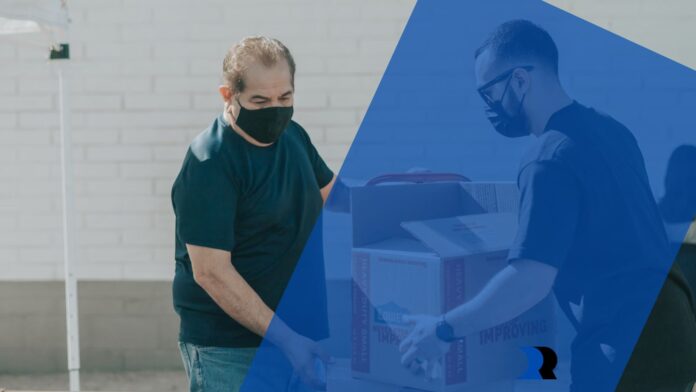Maybe yesterday, today, or tomorrow you’ll be standing next to someone who’d be trying their best to hold themselves together through a situation or their life; it is you who decides if you want to be there for them. Whether you help them, say a few kind words, or simply pass a smile, you may not know what they need but your little act of kindness gives them hope of goodness.
While these acts are an individual’s choice, a volunteer platform provides you an opportunity to meet like-minded people and shape a better society together, especially for vulnerable populations. These people live in poverty with a lack of basic needs like food, shelter, and healthcare, suffering, and in dire need of resources. Volunteers with their acts of kindness and service can bridge this connection between the resources and people who need them the most. While volunteerism is like a river nourishing whoever it meets in its journey, it often doesn’t realize the difference it is making as it never looks behind, only ahead. Thus, in this article, we’ll discuss how the efforts of volunteers spark a chain reaction of positive change in the world.
How Volunteerism Sparks a Chain of Positive Change
Meeting Immediate Needs
Food banks, homeless shelters, and charities have the essential services that can help vulnerable populations, whether it is food, shelter, education, or medical care. Still, they lack the means of delivering it. Here come volunteer donations of time and effort so that these services and resources reach as many people as possible. The impact of such services helps people in need to focus on improving their lives instead of surviving day by day. They act as a lifeline for both the organizations and the marginalized individuals.
Empowering with Education for Long-term Change
One of the powerful ways to bring change and extend knowledge is through education and skill-building. In this aspect, volunteers offer mentorship, tutoring, and vocational training, providing these individuals with the knowledge to take control of their lives. For instance, volunteers providing STEM education to underserved youth opens doors to new opportunities for them which they can use to break the cycle of poverty. This knowledge to a few individuals also spreads across families and communities, opening their minds, making them aware, and creating a long-term impact.
Providing Services Alongside the Government
Governments and institutions have programs and resources that cater to the needs of disadvantaged communities; sometimes they fall short of these resources. Budget constraints or the vast amount of time taken to act leaves a few gaps that volunteers step up to fill in.

Non-profits depend on volunteers and their professional skills to deliver services like legal advocacy to refugees or care for the elderly. The flexibility and personal attention volunteers provide prove to be a huge support to both the vulnerable population and the system.
Collectively Pushing for Policy Change
The role of the volunteers isn’t limited to providing direct services; it also extends to working to fix the bigger issues. Volunteers get involved in advocating for systematic changes that address the root cause of the problems instead of giving short-term relief. By organizing campaigns, participating in public demonstrations, and working with advocacy groups, volunteers push for new laws and policies that can create lasting change. Speaking up for the vulnerable population gives them a voice that they may not have the means to possess.
Building Community and Reducing Isolation
When society views someone differently, like the elderly, people with disabilities, or mental health issues, it casts them out, leaving them with loneliness. Volunteers with their empathic skills create an environment where these communities feel cared for and connected. Whether it’s by leading a support group, organizing community events, or just being a listener or friend, volunteers reduce their isolation and foster a sense of belonging. These efforts filled with compassion for other human beings give society a direction to be inclusive and supportive.
Creating Lasting Solutions
While tending to the immediate problems of the vulnerable population is necessary, the end goal of the social change effort is long-term change. Volunteers work in both areas so that one change can lead to another.

For instance, a group of volunteers supports projects like helping to develop a community garden, contributing to local business cooperatives, or supporting microfinance initiatives that make communities self-reliant. It not only alleviates the current problems but also lays the groundwork for vulnerable populations to thrive independently even without volunteers.
Final Thoughts
Volunteerism is like a flowing river. It keeps flowing with every volunteer effort, no matter how small contributes to a bigger movement that crafts a fairer and more caring society for the vulnerable groups. Whether it is providing a shoulder to cry on, listening to someone’s sorrows, providing them urgent support, or pushing for policy, changes your every little effort is a brick in building a world where everyone has a chance to succeed.


